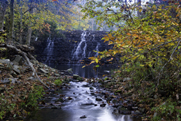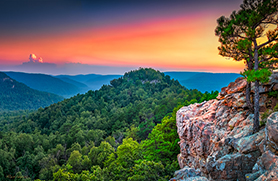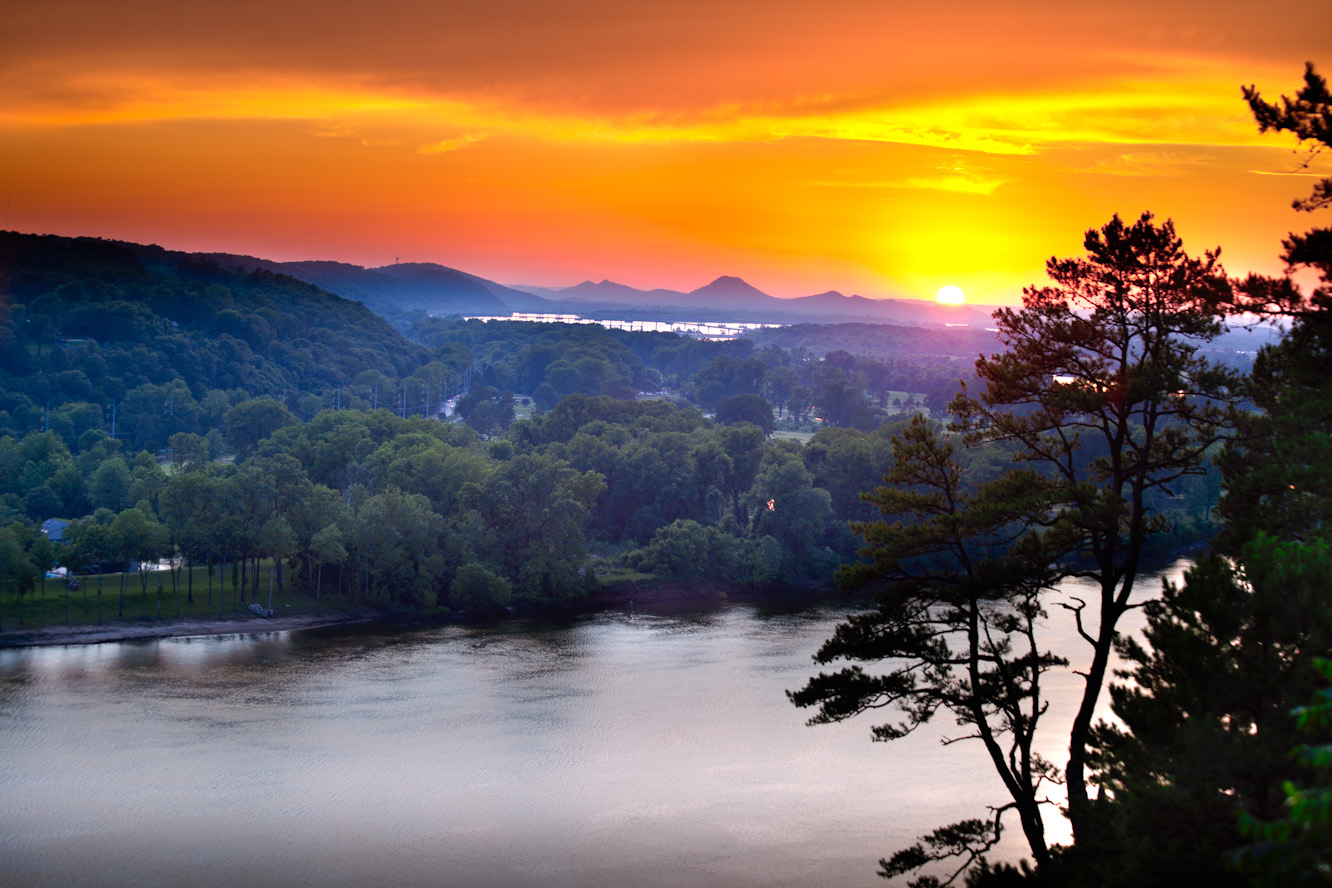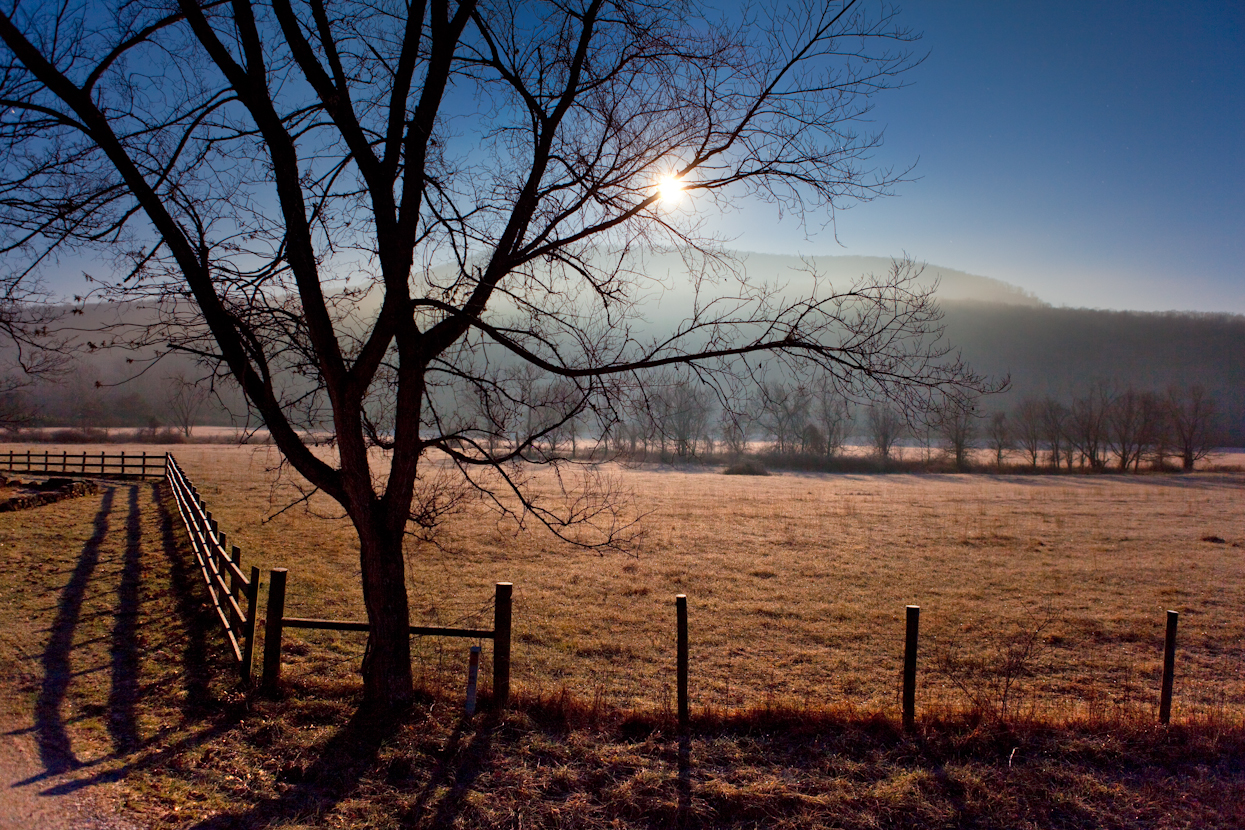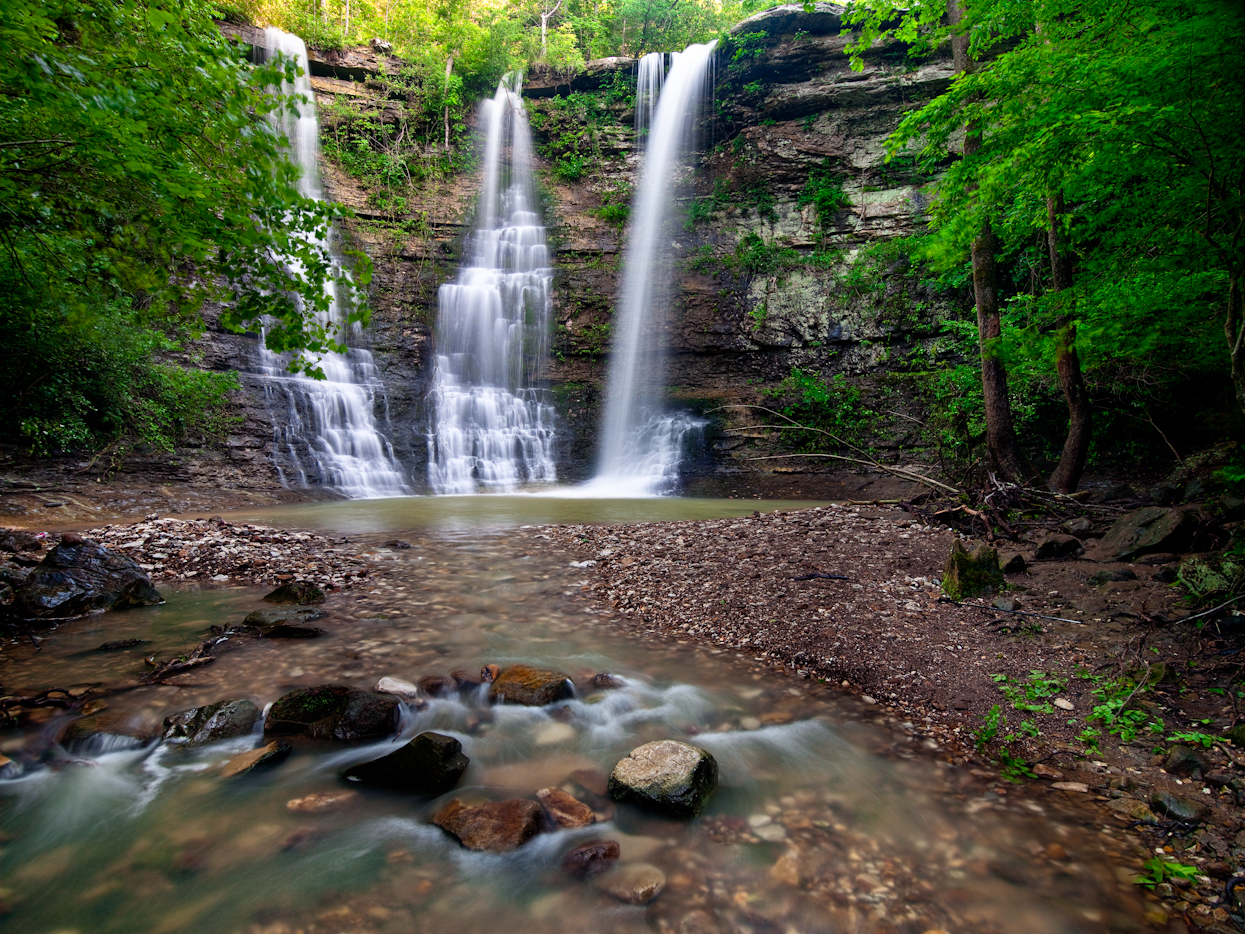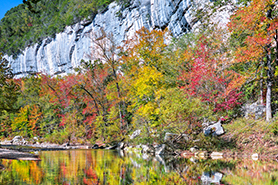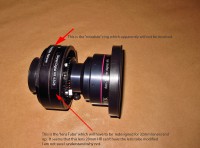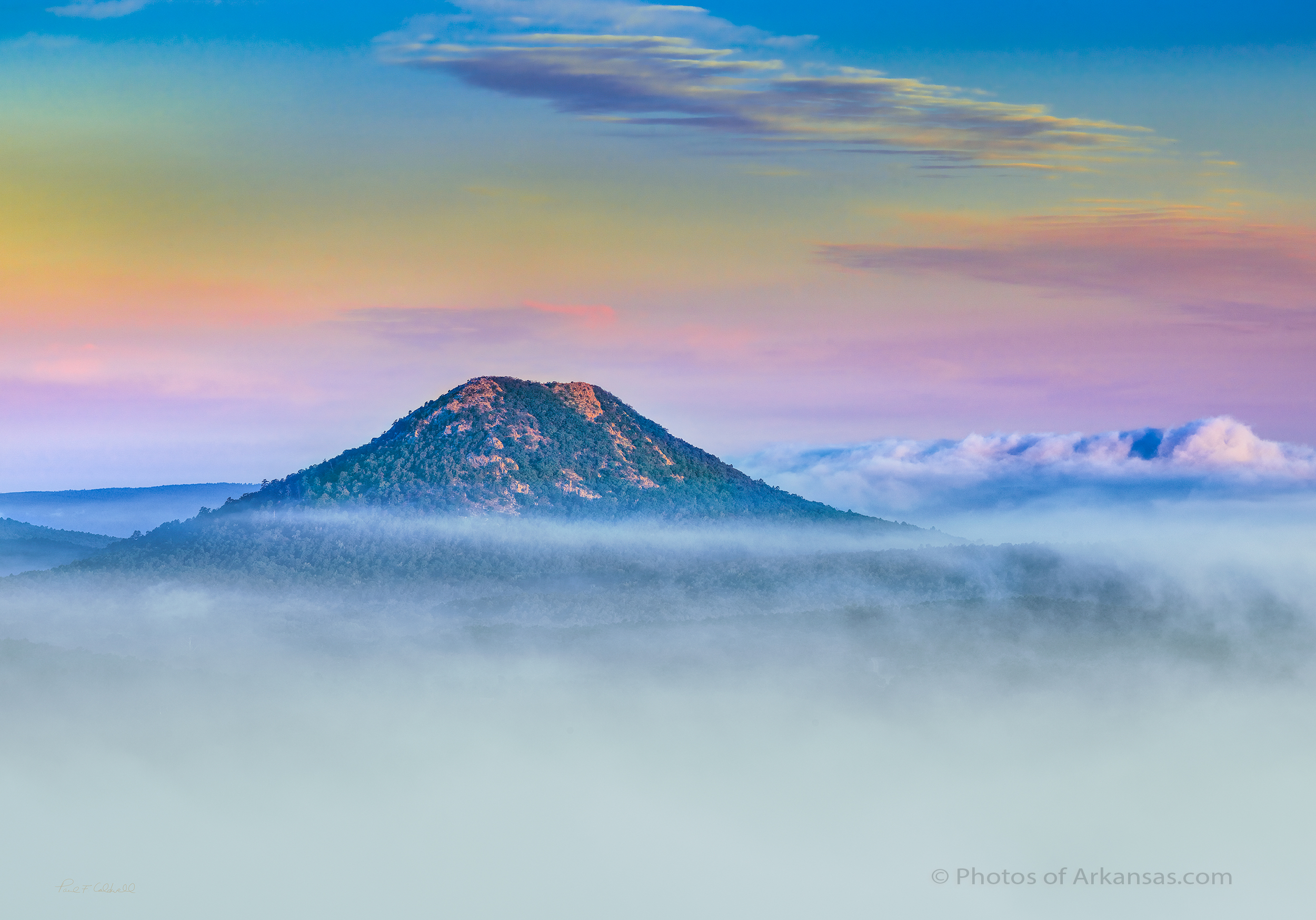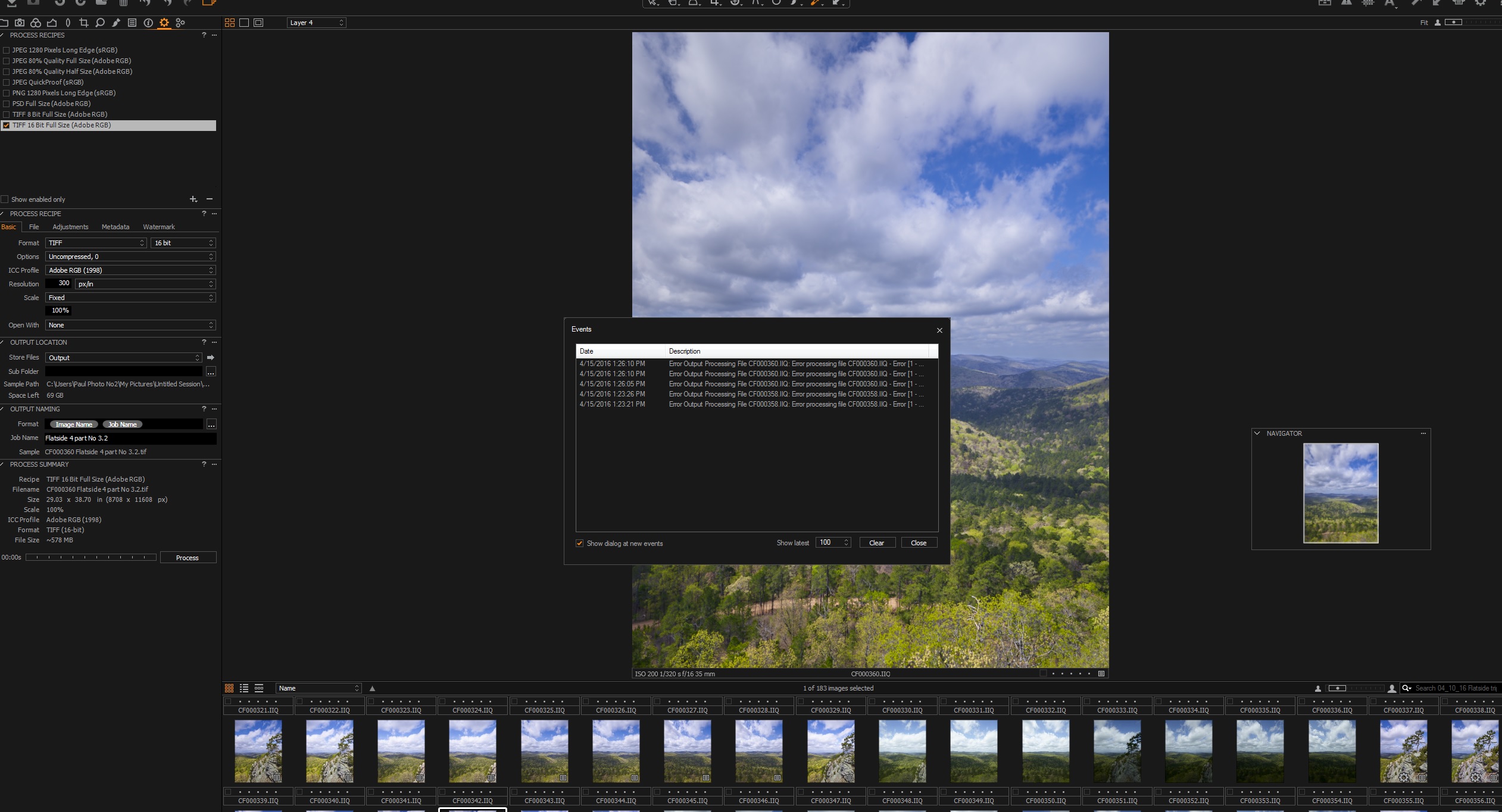09/18/13 Featured Arkansas Photography–The Natural Bridge in Lost Valley near Ponca Arkansas
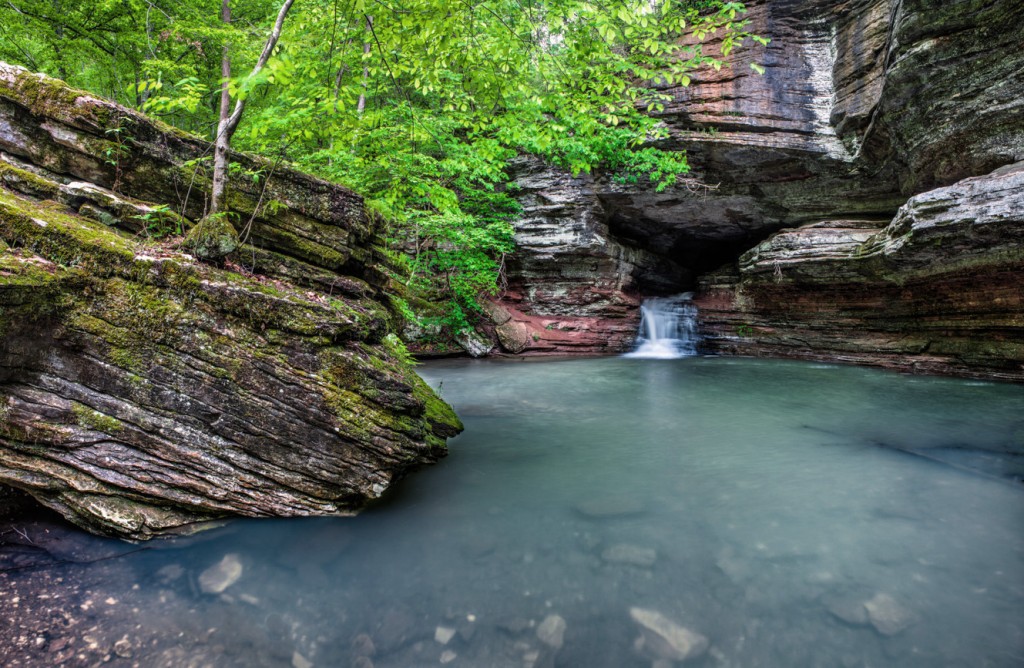
The Natural Bridge in Lost Valley near Ponca Arkansas on the Buffalo River–click on photo for a larger view
Taken with a Phase One P45+ in 3 vertical segments to be stitched into one frame, 35mm Mamiya lens, F14, iso50, 3 second exposures with ND filter and CL-PL. Lost Valley is one of my favorite spots in Arkansas to photograph, especially when there is water running in Clark Creek. I would say that in the 100 or so trips I have made to Lost Valley over the years, I have only seen water like that shown in this picture about 10 times. Clark Creek runs throughout Lost Valley and eventually empties into the Buffalo River above Ponca. This one valley has more scenic value packed into the 1.5 miles of trail than most other places in the Ozarks. You can find over 6 separate waterfalls when the creek is running at full flow. If you have not been there before with a good head of water running in Clark Creek, I would put this on your list of places to visit. You can be sure of good water in Clark Creek if the Buffalo River is running over 2000 cfs when gauged on the USGS gauge at Boxley. Lost Valley can also especially pretty in the dead of winter if you happen to catch it after a heavy snow.
The Buffalo National River turns 40 years old
- At August 30, 2012
- By paul
- In Buffalo at 40
 0
0
The magic and wonder of the Buffalo River has always kept me going over the years. I love to hike, photograph, and float the Buffalo throughout the year. It is an wonderful area to spend some time. However 2012 is very special as it’s the 40th anniversary of the Buffalo National River.
The year was 1972 and after long drawn out court battles in both Arkansas and Federal courts, the Buffalo River region was put aside as a National River. This was the first of it’s kind in the United State. The plan as it was laid out, would take the river and 1 mile of land on each side of the river to create a natural corridor. This Corridor would keep out any dams, commercial developments, and other man made intrusions. The river would be allowed to stay in it’s own state and continue to flow as it had for thousands of years.
The initial response was pro and con. Many families that had lived along the river for hundreds of years were forced to move off their land. Businesses were closed and everything man made was moved off the land within the boundaries. I can remember hiking down the road to Big Buff back in the mid 1980’s and still seeing a few hold outs that were living on their land. The National Park Service did allow some people to stay on their lands until their death, but then the land was reverted to the national river. Now, looking back 40 years later, it’s hard to tell in many places that anyone ever lived on the land. Fields that were cultivated for years have vanished and have been replaced with stand of new timber.
The Buffalo River is approximately 160 miles long with it’s head waters located in northwestern Newton Count. The river empties into the White River at Buffalo City. Throughout it’s length are scenic wonders that still catch my breath after all these years. You can find limestone bluffs as tall as 500 feet and waterfalls over 200 feel tall. There are hundreds of small hollows each with a unique look and feel. Over the past 30 years several wilderness areas have also been added along the Buffalo. I have special places that I find that I return to time and again, to hike and photograph throughout the four seasons.
I first came to the Buffalo region near Ponca with my parents in 1973, one year after the river had been made into a national river. Since then I have made over 400 trips over the years to the Buffalo and it’s surrounding hills and valleys. I have learned a lot about the history of the area and some of the families that started to make a living there back in the 1830’s. Taking photographs of the Buffalo region has been a passion of mine since 1976. I have traveled the length of the river twice and hope to do it again some time in the near future.
With this exhibit I am sharing some of my visions of the Buffalo region from trips I have made over th past 5 years. Many of these photographs are not of the buffalo River itself but instead are special spots that were also saved by the national river act in 1972. Please take a few minutes to look over these images and enjoy looking at at a part of Arkansas that is very dear to me. These images will be on display in framed prints and canvas at Cantrell Gallery, in Little Rock Arkansas.


